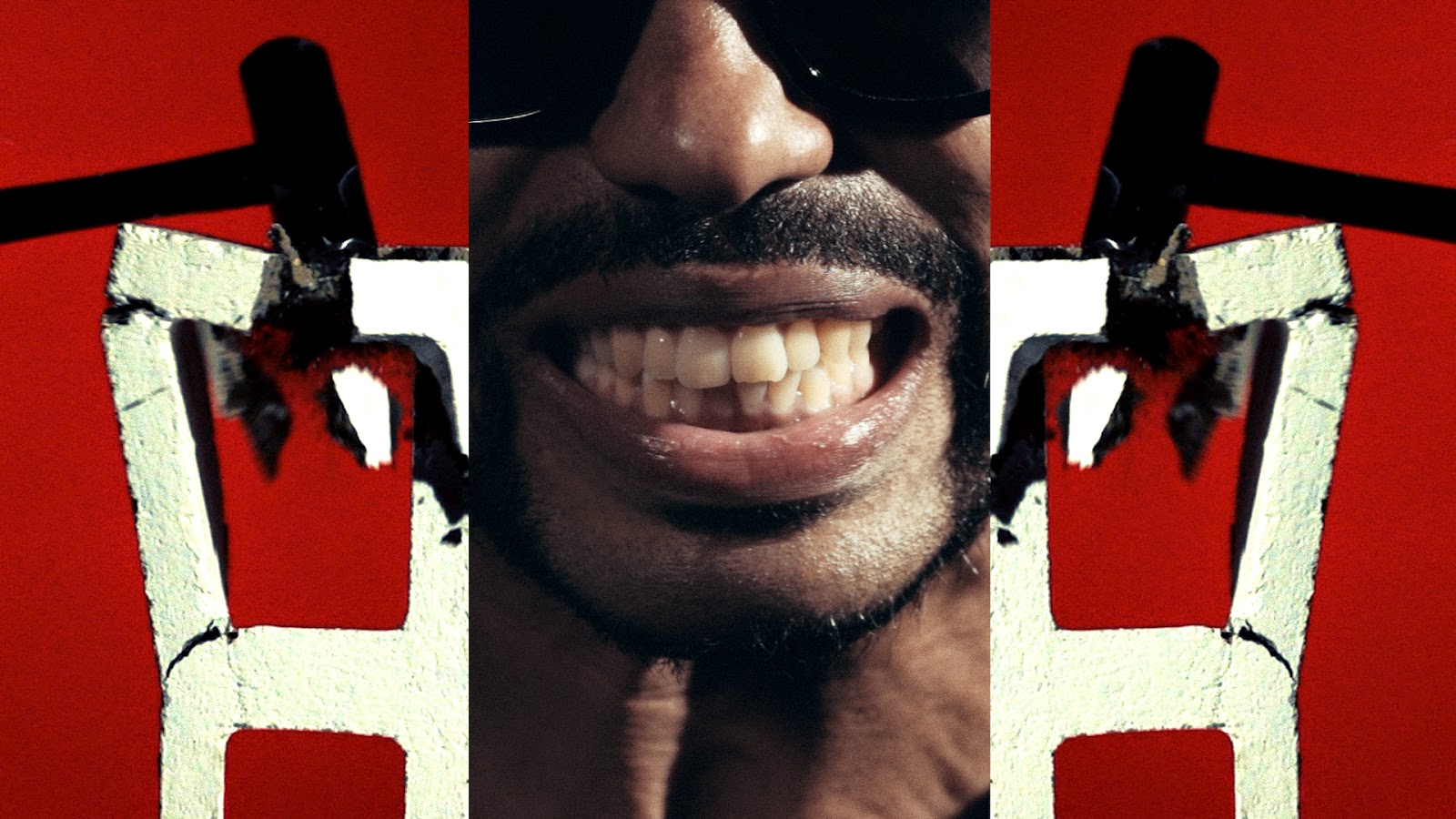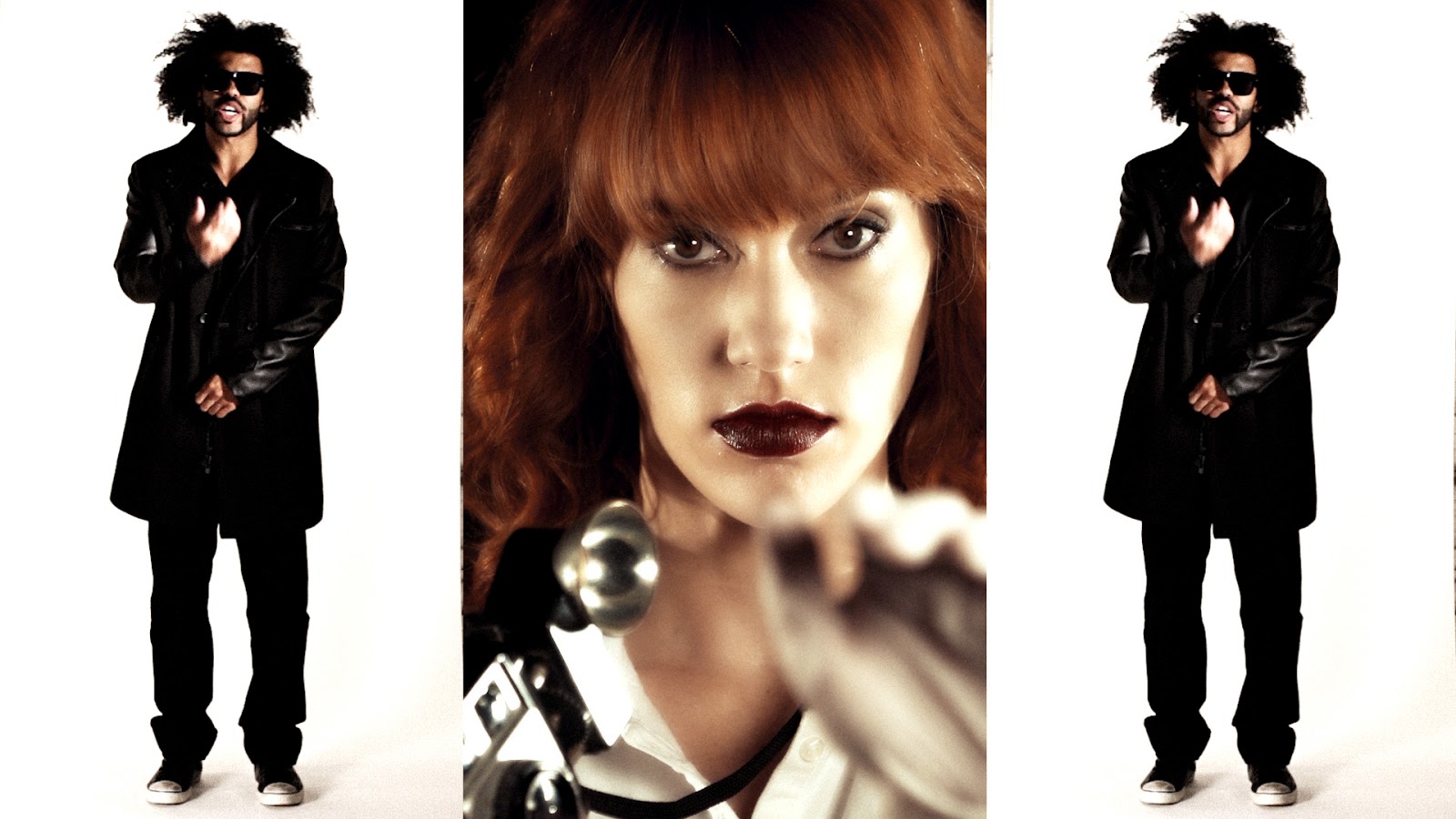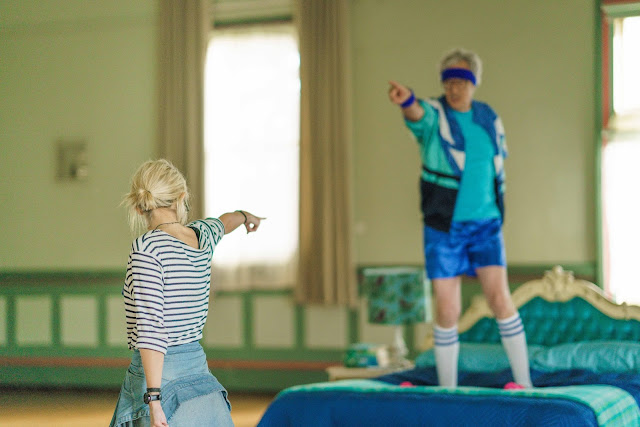Director: Patrick Kennelly
Director: Patrick Kennelly
Artist: Clipping.
Video: Body & blood
Artist: Clipping.
Video: Body & blood
How were
you approached for the job?
I’ve been
really good friends of the Clipping. guys for many years now, and have worked
with them as a group and also individually in many different collaborative
capacities. Currently, Jonathan (of Clipping.) is actually the composer and
sound designer for the feature film I have in post-production.
When
their album was nearing completion, the guys in Clipping. sent it over and
asked me if I was interested in doing one of the videos. They gave me free
reign to pick out what jumped out to me, and of course it was “Body & Blood”
immediately. It happened that that was a single they were leaning on, so it
worked out great.
What
inspired you on your idea for the video?
Because
Clipping. and myself are generally on the same wavelength, there wasn’t a lot
of highly specific direction given for the final result. Originally there was a
very particular idea for a video that revolved around something much more
abstract than what we ended up with - super-slow-motion CUs of extreme BDSM,
and this idea of genderless flesh - “equal-opportunity exploitation.” When we
got around to making the video, I took these initial ideas and shook it up with
some other thematics and aesthetics I was interested in exploring that seemed
appropriate… and, well, you see the final result!
Music
videos are the short form I think is the most expansive and free for playing
with narrative structure, something I’m very interested in. It’s very important
to me that all of the visuals and their juxtaposition connect to core ideas and
have an inevitable purpose. Whether independently or in-conjunction of what’s
happening with the song. The problem I feel with a lot of music videos these
days is that it becomes a lot of “throwing at the wall and seeing what sticks,”
and, in turn, creating ever more outrageous (whether violent, sexual, playful)
imagery that doesn’t have much to say on its own, least of all relate to what’s
going on with the music.
And
that’s where it all begins for me, what stories the song is speaking to me and
how I can viscerally recreate those onscreen in my own way. I don’t like
talking too much directly about the thematics of a completed work. The audience
projection and their individual perspectives derived are of more interest to
me, but suffice it to say, one of the principal questions I had for myself was;
how do you make an exploitative, voyeuristic piece ABOUT exploitation and
voyeurism? As is the case with previous projects I’ve done, and similar
questions I’ve posed myself, it’s about removing the anticipatory elements. Blood,
physical violence, a salacious use of sexual elements and letting the audience’s
minds fill in the blanks.
Of
course, how the final result is ended up with can be a bit convoluted (to
explain). The way I generally like working, particularly on these smaller
projects, is kind-of akin to action painting. I pick out all the specific
paints - performers, images, props, what have you - and then, in the shooting,
its just allowing these elements to combustively ignite and seeing what
direction that story leads. I know I have the right elements, and each of these
contains a seed of a narrative thread. But how they work together, I have no
idea until I put it together in the editing.
What was
the budget?
$1,000
USD
Tell us
about the production process?
Very low
key. We shot for 4 days with a crew essentially of myself and 3 - 4 others,
depending on the day (not including the performers), predominantly using green-screen.
What were
the limitations you faced with the production?
It would
be really easy here to say (and I’m sure many people do) money, time and crew.
But, honestly, this is a weak excuse. Would the video have been any better with
more money and a larger team to execute it? I don’t necessarily think so. I’ve
found, one can actually experiment a lot more and get a lot more material the
smaller the machine is. The small collaborative team involved in this project
was there because they believed in and were excited by the project, not because
of a “job” per se’. While each person has to pick up more weight, I can
personally say I probably had a lot more “fun” doing this than I’ve had on
projects that involve a higher budget and/or larger crew. The percentage is
weighted more towards play than problem solving.
What was
the turnaround?
Essentially
one month. I shot the band first over a night and then all the other material
was done over a 3-day weekend a few weeks later. I did all the post myself
directly inside Premiere Pro CC, the comping, split screens, colour correct,
everything. Though I wouldn’t necessarily recommend that kind of workflow.
Who were
your key collaborators?
My
director-of-photography was Trevor Baker, who I’ve worked with on a ton of
projects over the past few years, from video art pieces to an experimental
documentary we shot in South Sudan.
My producing assistant on this was Simona Kessler, a young woman who’s been very quickly establishing herself as a strong producing force. She’s been involved in a many projects I’ve done over the past two years, most recently as a Co-Producer on the feature I directed.
The excellent makeup artist Jutamard Kobkijtanaruang was an intern on that feature and did an amazing job here with a budget of exactly $0.
My producing assistant on this was Simona Kessler, a young woman who’s been very quickly establishing herself as a strong producing force. She’s been involved in a many projects I’ve done over the past two years, most recently as a Co-Producer on the feature I directed.
The excellent makeup artist Jutamard Kobkijtanaruang was an intern on that feature and did an amazing job here with a budget of exactly $0.
What did
you shoot on? What lenses did you use?
We shot
on the Canon 5D Mark 2 and the Sony FS700.
The FS700
was chosen because it was the cheapest we could find that would allow us to
shoot very high frame-rates. Most of the video was shot at 120 or 240fps.
Recording on a regular flash-card with that camera, which is what we had to do,
you only get 8-16 second bursts at such framerates. So that was a bit of a
trick!
In terms
of lenses, we did a bit with a 50 and 85mm, but most was actually shot with a
180mm macro lens!
How
involved were the band and label?
As you
can see from some of my answers to previous questions, both Clipping. and
SubPop gave me complete creative freedom and were nothing but fluid and
supportive through the entire process. I’m pretty darn sure that’s a rare
thing.
Tell us about the casting
and the performers.
The casting was a
combination of people I or my other producer, Simona Kessler knew. And also
through an open casting call I put out. In casting, I’m always looking for
particular individuals that are unique and or interest me and then I in part
shape the role around them, versus trying to shoehorn specific types into
roles.
Were there challenges
working with nudity at all?
None whatsoever. It was
very clear in the casting that it was going to be full nudes and I was very clear
about the intents and purposes of it.
Where did you shoot it?
We shot
at Highways Performance Space, where I have worked for the last decade or so.
I’m very familiar with this space and have shot in here many times
before.
If you
had a chance to approach it again, what would you do differently?
Everything
probably! Though the least helpful part for me of the creative and production
process is looking back.
Photo
credit for the BTS: Simona Kessler










.jpeg)
Great work, deeply disturbing and moving video, fabulous professionality! I'm a fan!! - The Delusional Diva
ReplyDelete